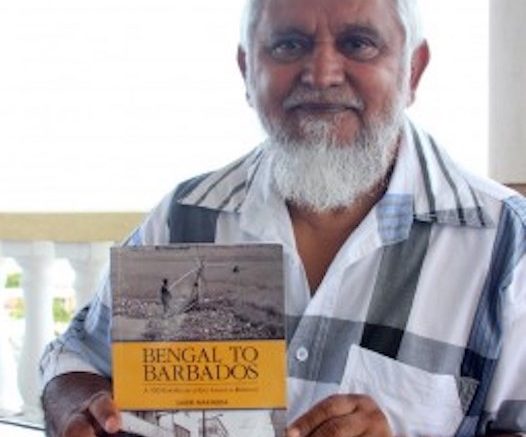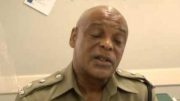First published in Barbados Today here
The East Indian community is a staple within the Barbados society. They have contributed to Barbados in a host of ways. But how many people are actually aware of their contributions, whether through the culinary arts, economics, Bajan folklore, the Roving Response network, or meteorology services?
The answer in most cases would be, not too many. It would appear that most associate East Indians in Barbados with the business or itinerant traders. One leader in the Muslim and East Indian community is on a mission however, to further educate Barbadians, and by extension the world, about the relationship with exists between the communities.
It has taken him more than 15 years, countless trips and conversations, research forays, persistence and dedication but Sabir Nakhuda has made it happen. And on Friday May 17 at the Grand Salle of the Tom Adams Financial Centre in the City it will all be unveiled when he launches his new book Bengal To Barbados.
In an interview (with Barbados TODAY) from the balcony of his Husbands Gardens, St. James home, overlooking the beautiful west coast, he stressed that his book was needed. He explained it was well known that the majority of East Indians entering the region went to countries like Trinidad and Tobago and Guyana as indentured labourers but those who came to Barbados did so on their own.
Nevertheless, during research at the Public Library and the Barbados Archives to dig deeper, there was hardly anything on East Indians apart from an interview here or there. Dissatisfied and wanting additional information, the former newspaper columnist and marketing manager took his tape recorder, notebook, and a lot of enthusiasm and started the journey through oral culture to find out more.
He said: “My main purpose was to create a better understanding between the two communities, East Indians and the local Barbadian, because sometimes we don’t make a special effort to learn about people who are living among us. So I want to have some type of historical document to create awareness between both communities, to build bridges. We have been building bridges but this book would help with that…”
The book chronicles the 100-year history of East Indians in Barbados, beginning with Bashart Ali Dewan, who was believed to be the first Indian to arrive in Barbados in 1910. Later Hafez Suleiman Kasooji, Moosa Patel and Ebrahim Bulbulia, the first Gujrati Indians arrived and in 1932 Jivatram Thani from Sindhi (now Pakistan) came to the island.
It gave a detailed overview on the hospitality met to the first immigrant by Barbadians and how each other was able to co-exist and assist one another. One of the main example was through business. At that time of their arrival in the early 20th century, local Barbadians were unable to get credit from the established†stores†in Broad Street.
Seeing a niche market, they came and provided that service and merchandised on a credit basis. Nakhuda, who came to the island more than half century ago, said they established that relationship where both benefited and it continues even up to today. Nowadays there is no party without somosas and rotis are second nature. “We want to educate not only Barbadians but the people of the world to show how we as East Indians and Barbadians live. I think there is a lot to be learned from us,” he added.
“We have problems within the world to do with race and colour, even religion especially, but if they could only know how we as Barbadians live we — hardly have any differences. If I have to tell you where you come from in two words I would tell you, but that is it and we back to normal again.
“We don’t have that animosity; we live as one people, Barbadians. Of course I would have my own concerns or preferences and you would have your own but difference is good because that just shows that people although we have our own cultural differences at the end of it I will still be eating flying fish and cou cou and I could still invite you home by me to eat dhali biryani rice, so we become richer.”.
In the foreword of the book, Prime Minister Freundel Stuart thanked†and congratulated Nakhuda for documenting†the “impressive contribution” over the last 100 years the East Indian society made. He wrote: “The Indian community has contributed much therefore to the economic and social development of this country. They have felt safe here in Barbados and have helped to keep Barbados a safe place in which to live and do business. A study of this story will contribute greatly to a deeper understanding of a community that has, by its presence, both diversified and enriched our culture.”
As he thanked all the individuals who helped with the compilation of the book, Nakhuda said he was hoping the Minister of Education would take a look at it† to see whether it was worth distributing into secondary schools, since “such documentation augurs well for the entire community”.
“I have dedicated this book to the future generations of Barbados, irrespective of colour or race. This book has to do with educating Barbadians of the connection between the two and have a better understanding of East Indian culture.
“It has already started but this is an added impetus, there is a need to have a particular understanding about a people so there won’t be any misunderstanding.†”You would get one or two in the local community that would make a negative comment, ‘Go back to where you come from’ but 80 to 90 per cent of all the East Indians are born here — their navel string is buried here, so go where? Go from St. Lucy to St. Michael?
“But now they are understanding there is no difference; it is just a matter of colour or hair. We hope that both communities can touch each other.”
Bengal To Barbados will be available at all books shops or obtained by contacting bengaltobarbados@hotmail.com for copies.





Be the first to comment on "BARBADOS BOOK PUBLISHED: BENGAL TO BARBADOS"